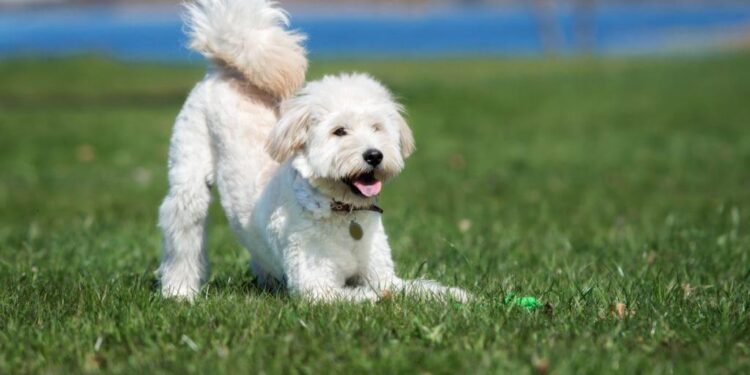Table of Contents
The Walk: A Dance of Partnership, Not a Tug-of-War
For countless dog owners, the daily walk is a source of frustration, not joy.
The vision of a pleasant stroll is often replaced by the reality of a strained arm, a dog gasping against its collar, and a pervasive feeling of dread.
This experience, a constant tug-of-war between human and canine, can damage the very bond the walk is meant to nurture.
The core of this problem, however, is not a disobedient dog, but a misunderstanding of communication.
The solution lies in shifting the paradigm from a battle for control to a collaborative effort.
The walk should not be a fight; it should be a dance.1
A good dance requires communication, trust, and a clear, gentle lead, not brute force.
The goal is a smooth, joyful, and connected experience where both partners understand their roles and move in harmony.1
To achieve this, one must first understand why a dog pulls.
Dogs do not pull on the leash to assert dominance or to be defiant.
Their behavior is driven by much simpler, more understandable motivations.
Firstly, pulling is a manifestation of natural instinct and excitement.
A dog’s natural pace is often a brisk trot, far faster than a human’s casual walk, and their world is an intoxicating tapestry of smells and sights they are eager to explore.2
Secondly, in most cases, dogs have simply never been taught the “steps” of the dance.
They do not inherently understand what a loose leash signifies or what is expected of them.2
Perhaps the most significant factor is inadvertent reinforcement.
Every time a dog pulls toward an interesting smell on a tree and the owner follows, the pulling behavior has been rewarded.
The dog learns that pulling is an effective strategy to get what it wants—to move forward and investigate its environment.2
This cycle of pulling and reaching the goal solidifies the unwanted behavior.
Therefore, the path to a peaceful walk does not begin with a tool designed to overpower the dog.
It begins with a fundamental shift in mindset.
The owner’s role is not that of a disciplinarian engaged in a physical contest, but that of a patient teacher and a skilled dance partner.
The solution is a combination of the right equipment to facilitate clear and humane communication, and the right training to teach the steps of this new dance.
By reframing the problem in this way, the focus moves from suppression to education, setting the stage for a stronger, more trusting relationship.
Choosing Your Dance Shoes: A Guide to Humane Walking Equipment
Just as a dancer selects the right shoes for support, balance, and clear communication with the floor, a dog and handler team needs the right equipment to learn and communicate effectively and safely.
The purpose of a training tool is not to force compliance through discomfort or pain, but to make it easier for the handler to teach, and for the dog to learn, the desired behavior of walking on a loose leash.
It is a facilitator of communication, not an instrument of control.
Before exploring specific types of equipment, a foundational rule applies to any collar or harness: it must fit correctly and be maintained for safety.
The widely accepted “two-finger rule” states that an owner should be able to comfortably slide two fingers between the collar or harness and the dog’s neck or body.
This ensures the equipment is snug enough to prevent escape but not so tight as to cause choking, chafing, or restricted breathing.5
Additionally, all equipment should be regularly inspected for fraying, damage to buckles or clasps, or other wear and tear that could cause it to fail under pressure.7
The following humane tools are recommended by trainers and veterinary professionals to manage pulling safely while training is underway.
The choice of tool should be based on a diagnosis of the dog’s specific behavior and physical characteristics, with the understanding that these are often temporary aids to help teach the “dance,” not permanent solutions.
Humane Leash Training Equipment at a Glance
| Equipment Type | How It Works (Mechanism) | Best For (Dog Type/Behavior) | Key Considerations (Fit & Training) |
| Front-Clip Harness | Redirects forward momentum by turning the dog’s shoulders back toward the handler when they pull. | General Pullers, Brachycephalic (flat-faced) Breeds, Dogs with Delicate Necks. | Ensure straps don’t restrict shoulder movement.8 Can be less effective for extremely powerful pullers. |
| Head Halter (Gentle Leader/Halti) | Works like a horse’s halter. Leash attaches under the chin, gently steering the head. Where the head goes, the body follows. | Strong, Energetic, or Large Dogs; Owners Needing More Control.5 | Requires gradual, positive introduction with treats.5 Can be mistaken for a muzzle.10 Improper use can injure the neck.11 |
| Martingale Collar | Limited-slip design. Tightens just enough to prevent the dog from backing out, without choking. | Sighthounds (Greyhounds, Whippets) with narrow heads.5 Fearful dogs or “escape artists” of any breed.5 | Must be fitted correctly to prevent choking.5 Does not, by itself, stop pulling.12 |
| Standard Flat Collar | Basic collar for holding ID tags and attaching a leash. Offers no mechanical advantage against pulling. | Dogs who have already learned to walk on a loose leash. The ultimate goal for all dogs.12 | Must be fitted properly to prevent slipping out or choking.5 Puts direct pressure on the trachea if the dog pulls.11 |
The Front-Clip Harness: The Gentle Guide for Most Dancers
The front-clip harness, such as the popular Easy Walk® Harness, is a top choice for many positive reinforcement trainers and veterinarians.9
Its design is simple yet effective: the leash attaches to a ring on the strap that sits across the dog’s chest.
When the dog pulls forward, the pressure on the leash gently turns the dog’s shoulders and body back toward the handler, redirecting their forward momentum.9
This makes it physically difficult for the dog to continue pulling straight ahead.
The primary advantage of this tool is that it completely removes pressure from the dog’s neck and trachea, a very sensitive area.11
This makes it an excellent choice for brachycephalic (flat-faced) breeds like Pugs and French Bulldogs, who are prone to respiratory issues, as well as for any dog where neck pressure is a concern.
It is crucial to distinguish front-clip harnesses from back-clip harnesses, where the leash attaches on the dog’s back.
Back-clip harnesses can inadvertently encourage pulling by engaging the dog’s “opposition reflex,” similar to how sled dogs are harnessed to pull weight.
When selecting a front-clip harness, proper fit is paramount.
Look for a “Y-style” or “H-style” design that allows for free movement of the shoulder joints, as some “no-pull” harness styles can restrict natural gait and potentially cause injury over time.8
The Head Halter: The Power-Steering Option for Strong Pullers
The head halter, also known by brand names like Gentle Leader™ or Halti®, operates on a principle similar to a horse’s halter: where the head goes, the body will follow.5
The device consists of two straps: one fits around the dog’s neck, high behind the ears, and the other forms a loop around the muzzle.
The leash attaches to a ring at the bottom of the muzzle loop.
When the dog pulls, a gentle tug on the leash guides the dog’s head, making it easy to redirect their attention back to the handler.
This gives the handler significant control with minimal physical effort, making it an excellent option for owners of large, strong, or highly energetic dogs.5
However, this tool comes with important caveats.
It must be used for gentle steering, never for jerking or yanking, which could cause neck injuries.5
Furthermore, because dogs are not accustomed to wearing something on their face, a patient and positive introduction is non-negotiable.
This process involves associating the halter with high-value treats and praise, starting with very short durations and gradually increasing the time the dog wears it comfortably before ever attaching a leash.5
Some trainers express concern that improper or forceful use can cause damage to the sensitive nerves in a dog’s face or create trauma to the neck.11
Therefore, consultation with a qualified positive reinforcement trainer or veterinarian is highly recommended to ensure proper fit and use.
The Martingale Collar: The Safety Net for Escape Artists
The martingale collar, also known as a limited-slip collar, is a specialized piece of safety equipment.
It consists of a main collar section and a smaller loop of material that the leash attaches to.
When the dog pulls or tries to back out of the collar, the tension on the leash tightens the smaller loop, which in turn gently tightens the main collar around the dog’s neck.
Crucially, it is designed to tighten only to a certain point—the size of the dog’s neck—preventing both escape and choking.5
This design makes it the go-to choice for sighthound breeds like Greyhounds and Whippets, whose narrow heads can easily slip out of standard flat collars.5
It is also an invaluable tool for any dog that is a known “escape artist” or for fearful and anxious dogs who may panic and try to back away from a perceived threat.5
It is important to understand that the primary function of a martingale collar is to prevent escape.
While the tightening action can get a dog’s attention, it does not provide a mechanical advantage against pulling in the same way a front-clip harness or head halter does.12
Its value lies in safety and security during the training process.
The Flat Collar: The Goal for the Accomplished Team
The simple flat buckle collar is the most common type of dog collar and serves an essential purpose: holding identification and registration tags.11
For leash training, however, it is best viewed as the ultimate goal rather than a starting tool for a dog that pulls.
A dog walking politely on a flat collar and loose leash signifies that the training has been successful; the dog has learned the “dance” and no longer needs a mechanical aid to help it do so.12
For a dog that has not yet learned loose-leash manners, a flat collar can be problematic.
When the dog pulls, all the force is concentrated directly on the trachea and other sensitive structures in the neck, which can cause discomfort and potential injury.11
It also offers the handler no leverage to manage the pulling.
Therefore, while it is the ideal destination for every trained dog, it is often not the best starting point for the training journey itself.
The Old School vs. The New Science: Why Aversive Tools Cause Two Left Feet
While the previously discussed tools are designed to facilitate communication and manage behavior humanely, another category of equipment exists, designed not to guide, but to punish.
Aversive collars—including choke chains, prong collars, and shock collars—operate by causing pain, fear, or discomfort to suppress unwanted behavior.
An overwhelming consensus among major veterinary associations, humane organizations, and modern behavior experts advises strongly against their use, as they are not only physically and psychologically harmful but are also rooted in a scientifically debunked training philosophy.5
Deconstructing the Tools of Punishment
Choke Chains: Often made of metal links, these collars are designed to constrict infinitely around a dog’s neck when the leash is pulled.5
Unlike a martingale collar, there is no built-in safety mechanism to stop the tightening, making it possible to strangle or severely injure the dog.5
The physical risks are extensive and well-documented, including injuries to the trachea and esophagus, neck sprains, nerve damage, damage to blood vessels in the eyes, fainting, and even death.5
They are considered “dinosaurs of the dog training world”—unnecessary, outdated, and inhumane relics in an era with far superior and safer alternatives.12
Prong or Pinch Collars: These collars are constructed with a series of metal links that have blunted prongs pointing inward.
When the leash is tightened, these prongs dig into the dog’s neck, working explicitly by “instilling pain”.6
Proponents may claim they mimic a mother dog’s correction, but this is an anthropomorphic justification for a tool designed to cause discomfort.
They are considered an even more severe tool than a choke chain and are likewise discouraged by veterinary professionals due to the risk of injury and the negative behavioral fallout associated with pain-based training.6
Shock or Electronic Collars: Marketed with euphemisms like “e-collars,” “stim collars,” or “a tap on the shoulder,” these devices deliver an electric shock, vibration, or sound via a remote control or automatic trigger.17
Despite marketing claims of being gentle, experts label them as “barbaric”.16
The use of shock can cause painful skin burns, unhealthy increases in heart rate, and significant psychological distress, including phobias, high stress levels, and anxiety.14
The harm is so recognized that their use is banned or restricted in numerous countries, including the UK, France, and New Zealand.16
The Flawed Philosophy Behind the Force
The decision to use an aversive tool is not merely a choice of equipment; it is an endorsement of an outdated and flawed training ideology.
These tools are the physical manifestation of “dominance theory,” a concept that has been thoroughly discredited by modern science.18
This theory, which posits that owners must establish themselves as the “alpha” over their dogs, arose from flawed studies of captive, unrelated wolves in the mid-20th century.
These studies observed forced hierarchies and conflict that are not representative of natural wolf packs, which function more like human families.19
Crucially, the original researchers, like David Mech, have since renounced their early conclusions, clarifying that the “alpha” concept is not applicable to wild wolf packs, let alone to the relationship between humans and domestic dogs.19
Thousands of years of domestication have made dogs uniquely attuned to human social cues and cooperative partnership, a trait not seen in their wolf ancestors.18
Therefore, using tools designed to establish dominance through intimidation and physical correction is to base one’s training on a foundation of scientific error.
It is an attempt to solve a communication problem with a conflict-based approach that is fundamentally inappropriate for the species being trained.
The Fallout: More Harm Than Good
The consequences of using aversive, punishment-based methods extend far beyond the immediate physical pain.
They actively undermine the goals of training and can create more severe behavioral problems.
First, these methods break the human-animal bond.
Instead of seeing the handler as a source of safety and guidance, the dog learns to associate them with pain and fear.
This can lead to a dog that avoids its owner or even becomes aggressive as a defensive response.10
Second, they create damaging negative associations.
A dog has no way of knowing that the sudden pain from a prong collar or shock collar is coming from the handler.
It is just as likely to associate the correction with whatever it was looking at when the pain occurred—a child, another dog, a bicycle, or a garbage truck.
This can create new, profound fears and phobias, and is a common cause of leash reactivity and aggression.16
Finally, punishment teaches a dog what not to do, but fails to teach it what to do.
It suppresses behavior through fear but provides no desirable alternative.
A dog may stop pulling to avoid being choked or shocked, but it has not learned the skill of walking on a loose leash.
It has only learned to shut down and become passive to avoid pain, a state that is often mistaken for calm obedience.16
This approach robs the dog of its confidence and willingness to engage in the learning process, creating two left feet in the dance of partnership.
Learning the Steps: Your Positive Reinforcement Training Plan
With the right “dance shoes” (humane equipment) selected and a clear understanding of why a positive, cooperative approach is essential, it is time to learn the actual steps of the dance.
Positive reinforcement training is not about a lack of rules; it is about teaching the rules in a way the dog can understand and is motivated to follow.
The process is about restructuring the entire environmental and relational contract of the walk.
The dog learns a new set of rules for how the world works: a loose leash makes the walk continue and leads to wonderful things, while a tight leash makes all forward progress stop.
This approach builds a dog that chooses to walk politely because it has learned that doing so is the key that unlocks everything it desires on a walk.
Consistency, patience, and making the process fun are the cornerstones of success.2
Setting the Stage for Success
Before the first step is taken, setting up the environment for learning is crucial.
- Start in a Low-Distraction Environment: A busy street is a final exam, not a first lesson. Begin training sessions in a quiet, familiar place with minimal distractions, such as inside the house, in the backyard, or on a quiet cul-de-sac.9 As the dog becomes proficient, gradually increase the level of distraction to help them generalize the skill to more challenging environments.2
- Manage Energy Levels: A dog that is bursting with pent-up energy cannot be expected to focus and learn. Before a training walk, engage the dog in a short, vigorous play session in the yard or a few minutes of mentally stimulating “brain games” like finding hidden treats.3 A dog that has had the edge taken off its energy is a more receptive student.
- Use High-Value Rewards: The reinforcement must be more compelling than the environment’s distractions. For leash training, this often means using small, soft, and exceptionally tasty treats that the dog does not get at any other time. The goal is to make the reward for paying attention to the handler more valuable than the reward of pulling toward a squirrel.4
The Core Techniques for a Loose Leash
These methods work together to create a clear and consistent communication system.
- Technique 1: Rewarding What You Want (The Foundation): This is the simplest and most powerful component of the training plan. The moment the leash goes slack, even for a single second, mark the behavior with a clear, happy verbal marker like “Yes!” and immediately deliver a treat. The treat should be delivered right next to the handler’s leg, at the position where the dog should be walking.4 This teaches the dog that being in that specific spot, close to the handler, is the most rewarding place on Earth. In the beginning, this may require rewarding every one or two steps to build a strong foundation of reinforcement.10
- Technique 2: The “Be a Tree” / “Red Light, Green Light” Game: This technique teaches the dog a clear consequence for pulling: it makes all the fun stop. The instant the dog pulls and the leash tightens (red light), the handler must immediately stop walking and plant their feet like a tree.4 The handler should not pull back or speak to the dog; they simply become an immovable object. Then, they wait. Eventually, the dog will stop pulling and introduce slack into the leash, perhaps by turning to look back or taking a step toward the handler. The very moment the leash loosens, the handler marks with “Yes!”, offers a reward, and immediately resumes walking (green light).4 This technique must be applied with 100% consistency; if pulling works even one out of five times, the dog learns that it is still a viable strategy.9
- Technique 3: Be More Interesting Than Dirt: On a walk, the handler is competing with a world of fascinating smells and sights. To win this competition, the handler must be more interesting. This means being an active, engaged partner, not a passive anchor at the end of the leash.3 Use an upbeat, happy tone of voice. Make sudden, playful changes of direction, turning 180 degrees and walking the other way, rewarding the dog enthusiastically when it catches up. This “crazy walking” teaches the dog that it needs to pay close attention to the handler because they are unpredictable and fun to follow.3
- Technique 4: Using “Life Rewards”: Walks are inherently enriching for dogs. This can be leveraged as a powerful training tool. Instead of relying solely on treats, the handler can reward good walking with access to the things the dog naturally wants to do. After the dog walks politely for ten paces, the handler can give a release cue like “Go sniff!” and allow the dog a minute to investigate an interesting patch of grass. This “life reward” powerfully demonstrates that polite walking is the currency used to purchase environmental exploration.4
These methods are not theoretical; they are proven to work in the real world, even with dogs that have challenging behaviors.
Success stories abound of owners who, through patient and positive training, have transformed reactive or fearful dogs into confident walking companions.21
The process itself builds a deeper bond, as the owner learns to read their dog’s cues and the dog learns to trust its owner’s guidance, creating a partnership that extends far beyond the walk.21
The Rudder and the Sail: Guiding Your Journey Together
After exploring the tools, the science, and the techniques, the journey toward the perfect walk culminates in a final, unifying philosophy.
The relationship between a handler and their dog on a leash can be understood through the powerful metaphor of a sailboat.
In this analogy, the dog’s natural energy, enthusiasm, and desire to explore are the sails, the powerful force that propels the vessel forward.
The handler, through clear and gentle communication, is the rudder.24
A rudder does not fight the wind or power the boat.
Its function is to provide small, precise, and almost effortless course corrections to guide the immense power already present in the sails.24
A skilled sailor works
with the forces of nature, not against them, using the rudder to navigate toward a destination.
This perfectly encapsulates the role of a positive reinforcement trainer.
The goal is not to suppress the dog’s energy (the sail) with aversive force, but to channel and guide it constructively with clear, gentle signals (the rudder).
Trying to yank a dog into position is like trying to drag a sailboat against the wind—an exhausting, inefficient, and ultimately futile struggle.
Learning to use a head halter for a gentle turn or a front-clip harness to redirect momentum is learning to use the rudder effectively.
This perspective reveals that the debate between aversive and positive training methods is fundamentally a debate about the desired nature of the human-dog relationship itself.
Aversive tools and the philosophy behind them are designed to produce compliance through coercion and the threat of pain.
This creates a relationship built on a power dynamic of master and subject, where the goal is rote obedience.
Positive methods, in contrast, are designed to foster cooperation through communication and trust.
This creates a partnership of a leader and a willing, enthusiastic follower, where the goal is a joyful collaboration.
The true destination of leash training is not a dog that heels like a robot, devoid of joy or curiosity.
The true destination is a deep and resilient bond, a partnership where walks become a cherished highlight of the day for both human and dog.14
The journey requires patience, consistency, and a willingness to be a good teacher.
But the reward—a lifetime of happy adventures with a trusted companion—is immeasurable.
The “perfect walk” is not about flawless execution; it is about the connection shared between partners.
By choosing to be the gentle rudder, not the heavy anchor, an owner sets both themselves and their dog on a course for success.
Works cited
- DANCES WITH DOGS – Best Paw Forward, accessed August 12, 2025, https://www.bestpawforward.net/resources/Dances%20With%20Dogs.pdf
- Overcoming Leash Pulling Issues with Consistent Reinforcement Training Methods, accessed August 12, 2025, https://canurdogdothis.com/blog/overcoming-leash-pulling-issues
- Large-dog breed owners, how do you handle your dog pulling on leash? – Reddit, accessed August 12, 2025, https://www.reddit.com/r/Dogtraining/comments/roziy7/largedog_breed_owners_how_do_you_handle_your_dog/
- How to Stop Your Dog From Pulling on Leash – American Kennel Club, accessed August 12, 2025, https://www.akc.org/expert-advice/training/expert-tips-dog-leash-issues/
- Which type of dog collar is best for your dog? | Humane World for …, accessed August 12, 2025, https://www.humaneworld.org/en/resources/dog-collars
- AS-564-W Choosing the Right Type of Collar for Your Dog, accessed August 12, 2025, https://www.extension.purdue.edu/extmedia/as/as-564-w.pdf
- Leash Training: When Your Dog Pulls or Refuses to Walk | Knisley’s Pet & Farm Center, accessed August 12, 2025, https://kniselys.com/blog/71346/leash-training-when-your-dog-pulls-or-refuses-to-walk
- Loose Leash Walking With Dogs – VCA Animal Hospitals, accessed August 12, 2025, https://vcahospitals.com/know-your-pet/controlling-pulling-on-walks
- Stop a Dog From Pulling on Leash | Best Friends Animal Society, accessed August 12, 2025, https://bestfriends.org/pet-care-resources/how-stop-dog-pulling-leash
- Loose Leash Walking – UC Davis School of Veterinary Medicine, accessed August 12, 2025, https://www.vetmed.ucdavis.edu/sites/g/files/dgvnsk491/files/inline-files/Loose_Leash_Walking.pdf
- What Is the Best Training Collar for Dogs? Expert Recommendations – Kinship, accessed August 12, 2025, https://www.kinship.com/dog-behavior/best-training-collars-for-dogs
- Collars, Leashes and Harnesses (oh my) – FernDog Training, accessed August 12, 2025, https://ferndogtraining.com/collars-leashes-and-harnesses/
- Safe and Effective Dog Training Collars | Pawlicy Advisor, accessed August 12, 2025, https://www.pawlicy.com/blog/safe-and-effective-dog-training-collars/
- 5 Reasons not to use a shock collar – BC SPCA, accessed August 12, 2025, https://spca.bc.ca/ways-to-help/take-action/animals-in-the-home/the-shocking-truth-about-electronic-collars/5-reasons-not-to-use-a-shock-collar/
- Position Statement on Training Aids and Methods – ASPCA, accessed August 12, 2025, https://www.aspca.org/about-us/aspca-policy-and-position-statements/position-statement-training-aids-and-methods
- Shock Collars: Barbaric, Ineffective, and Unacceptable – NAVTA, accessed August 12, 2025, https://navta.net/head-to-tail-w-steve-dale/shock-collars-barbaric-ineffective-and-unacceptable/
- Do vets recommend e-collars for dogs? – Hidden Fence, accessed August 12, 2025, https://hiddenfence.com.au/do-vets-recommend-e-collars-for-dogs/
- The Evolution of Modern Dog Training – Manners For Mutts, accessed August 12, 2025, https://mannersformutts.com/blog/2024/10/08/the-evolution-of-modern-dog-training/
- Traditional training versus Modern methods – Hanne Grice Pet …, accessed August 12, 2025, https://www.hannegrice.com/walk-the-dog/traditional-training-versus-modern-methods/
- The Changing Face Of Dog Training (And How To Choose Your Style) – dogsnet.com, accessed August 12, 2025, https://dogsnet.com/the-changing-face-of-dog-training/
- A Story of Love and Positive Reinforcement Dog Training – Four Legged Scholars, accessed August 12, 2025, https://fourleggedscholars.com/blog/2009/08/07/weekly-dog-training-tip-a-story-of-love-and-positive-reinforcement-dog-training-aug-8th/
- Success stories with positive reinforcement for leash reactivity? : r/Dogtraining – Reddit, accessed August 12, 2025, https://www.reddit.com/r/Dogtraining/comments/lehxdo/success_stories_with_positive_reinforcement_for/
- Testimonials – Leading the Leash, accessed August 12, 2025, https://leadingtheleash.com/testimonials/
- Lead Like You’re the Rudder of a Sailboat – Bishop House Consulting, accessed August 12, 2025, https://www.bishophouse.com/leadwell/building-my-team/lead-like-youre-the-rudder-of-a-sailboat/
- The Rudder and the Soul – Perspectives & Possibilities, accessed August 12, 2025, https://rickbellingham.com/2017/02/21/the-rudder-and-the-soul/
- Navigating Life Using the Sailboat Metaphor’s Wisdom – Rudder4Life, accessed August 12, 2025, https://www.rudder4life.com/navigating-life-using-the-sailboat-metaphors-wisdom/
- The Rudder Fallacy – Adopting Lean Startup Principles – Kromatic Blog, accessed August 12, 2025, https://kromatic.com/blog/the-rudder-fallacy-adopting-lean-startup/






